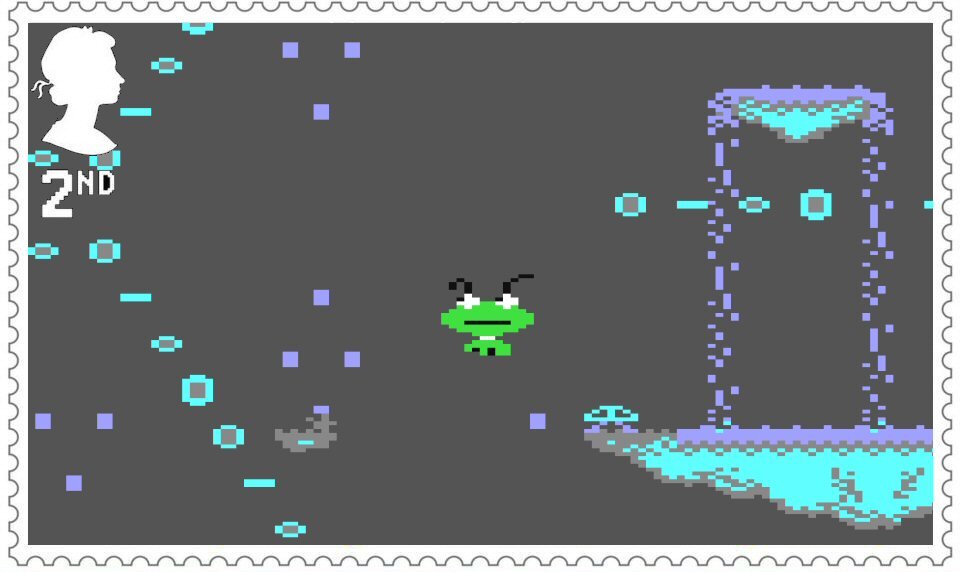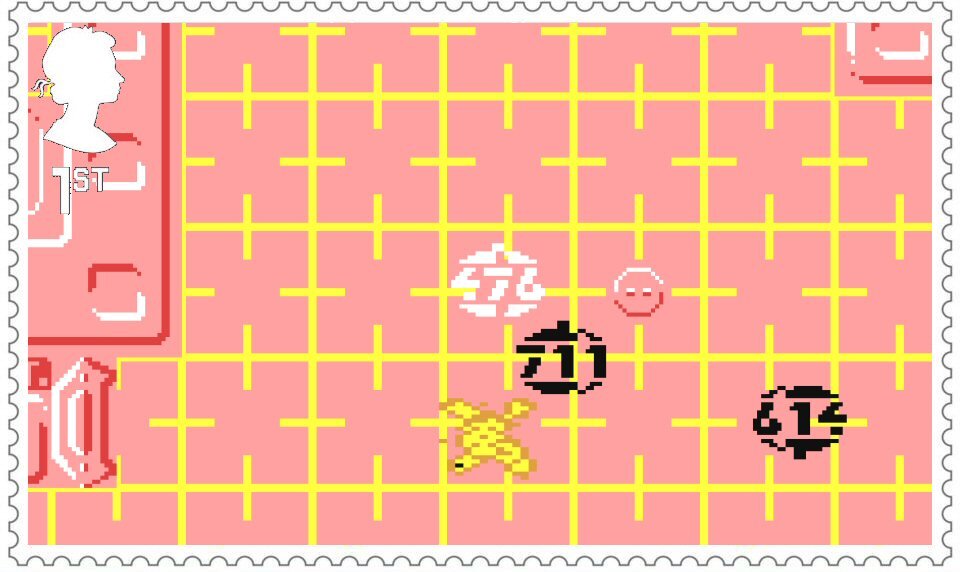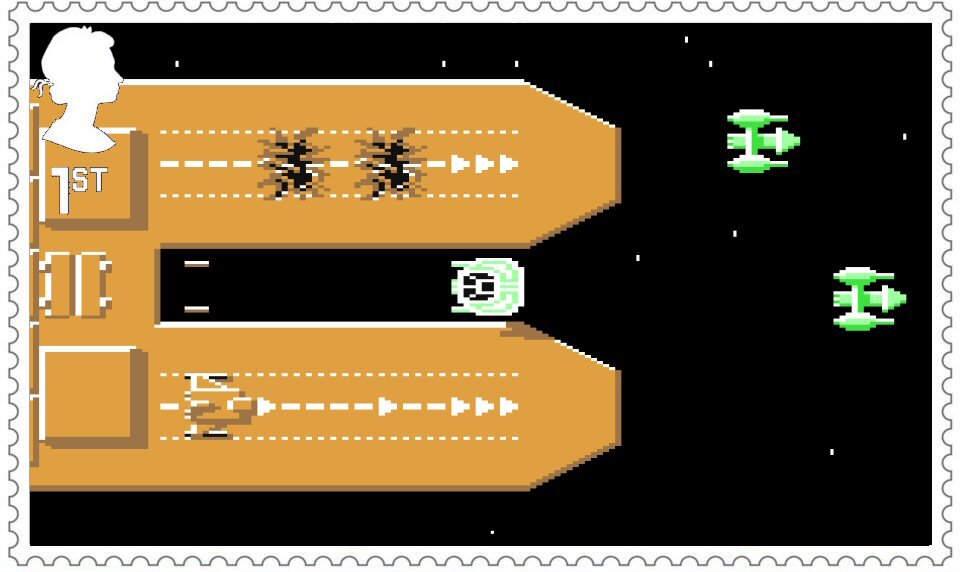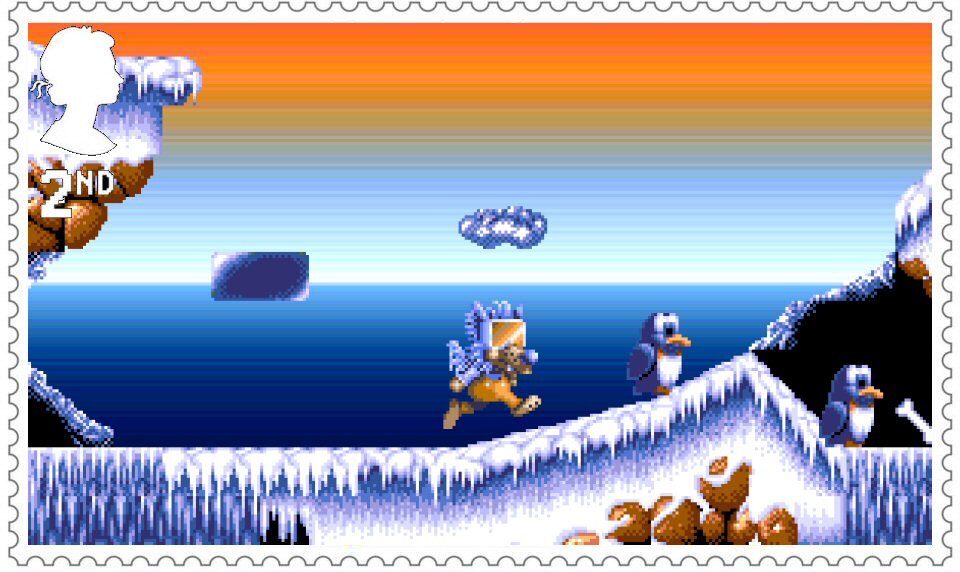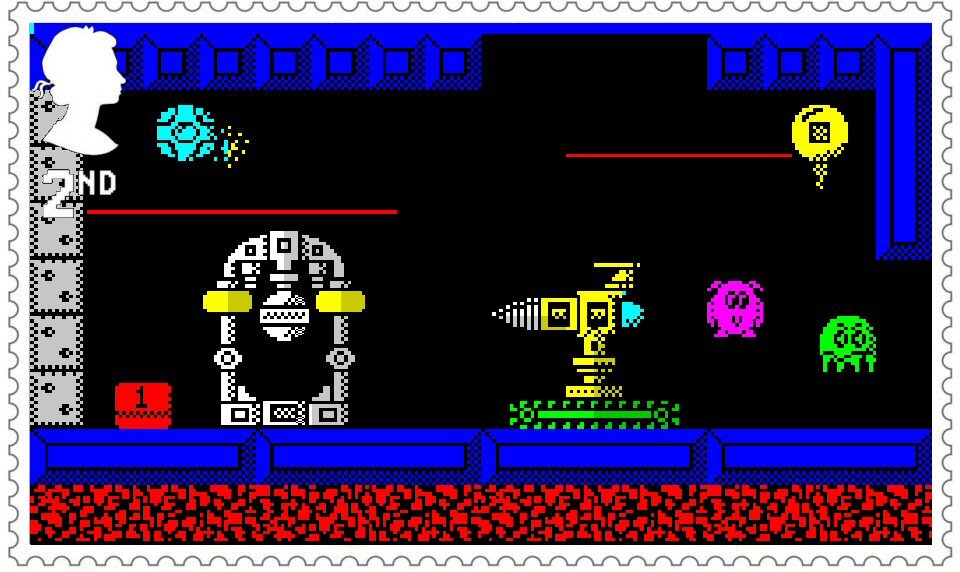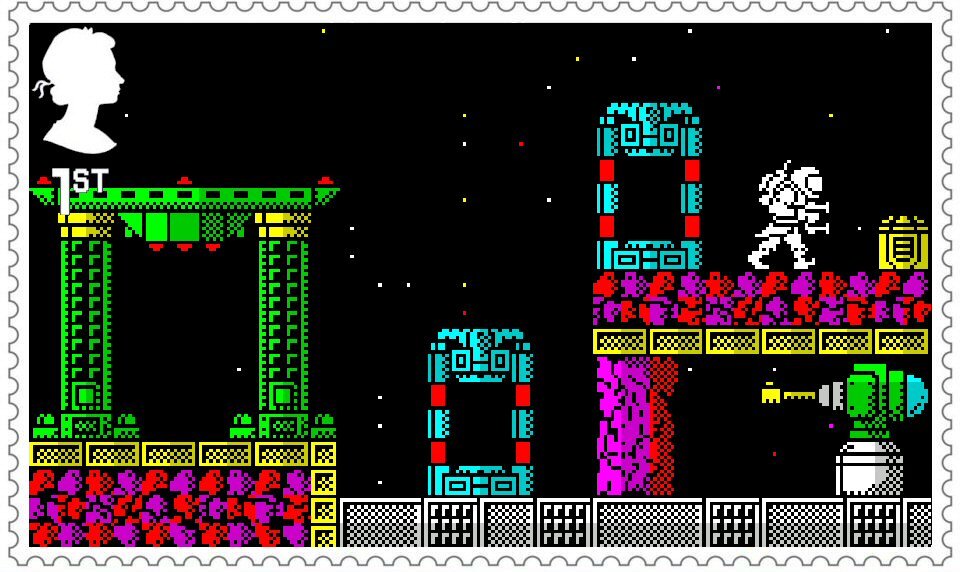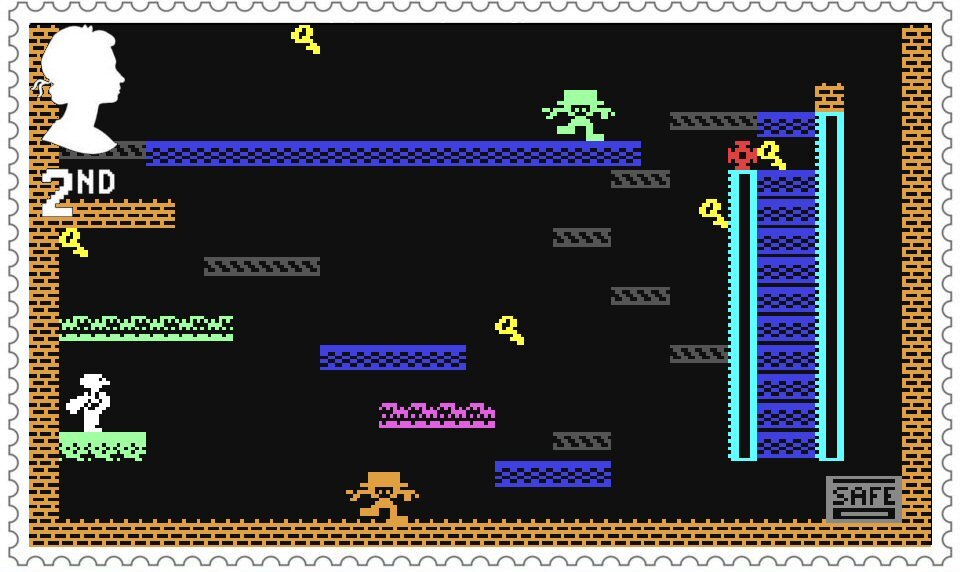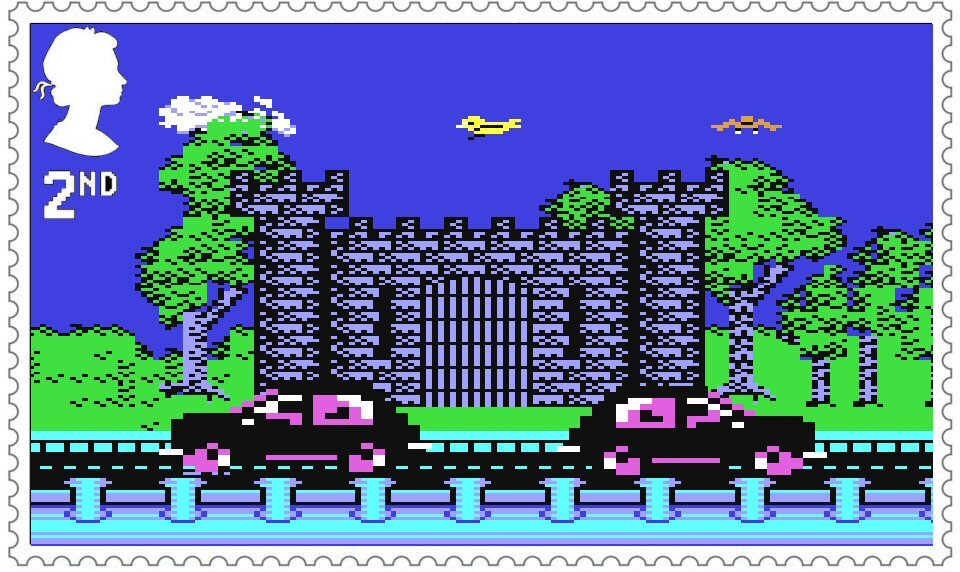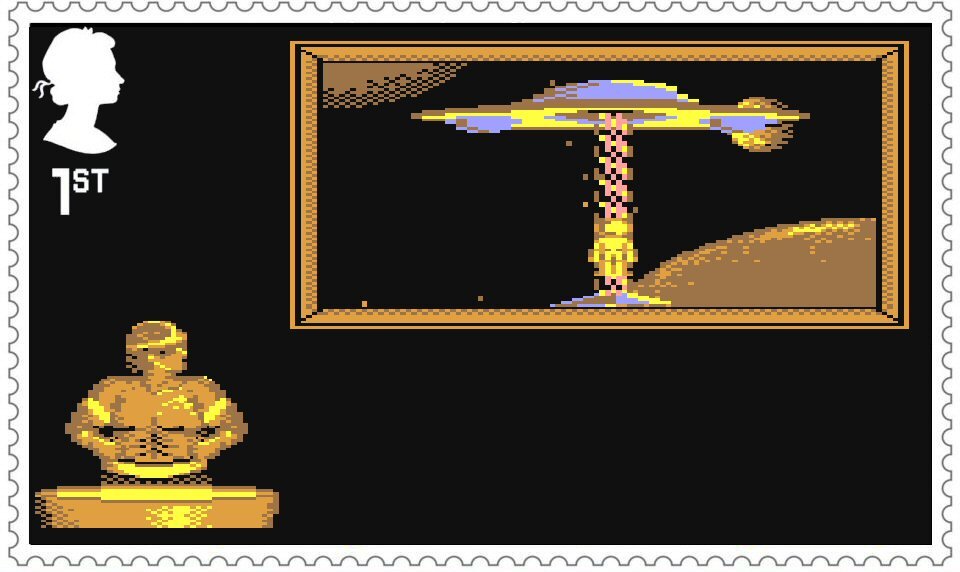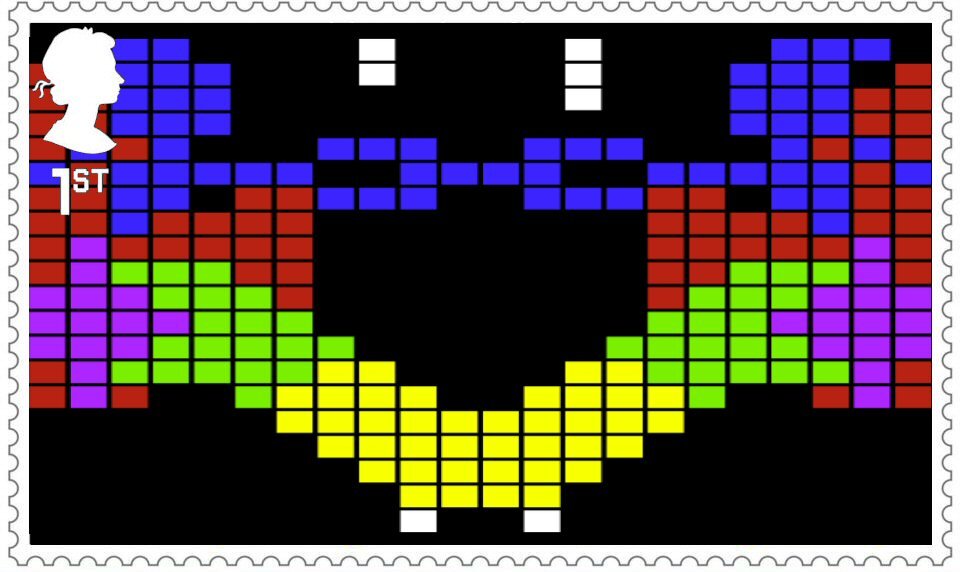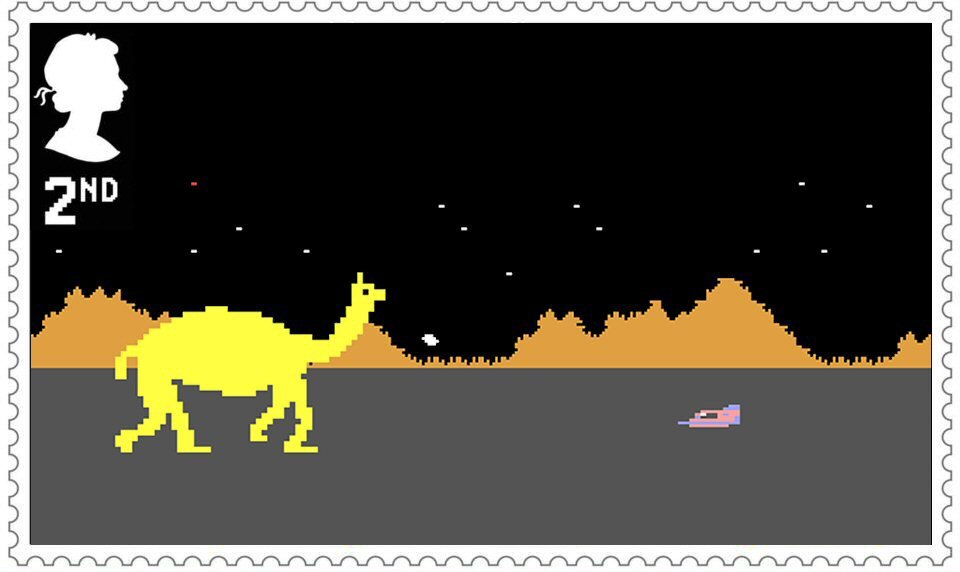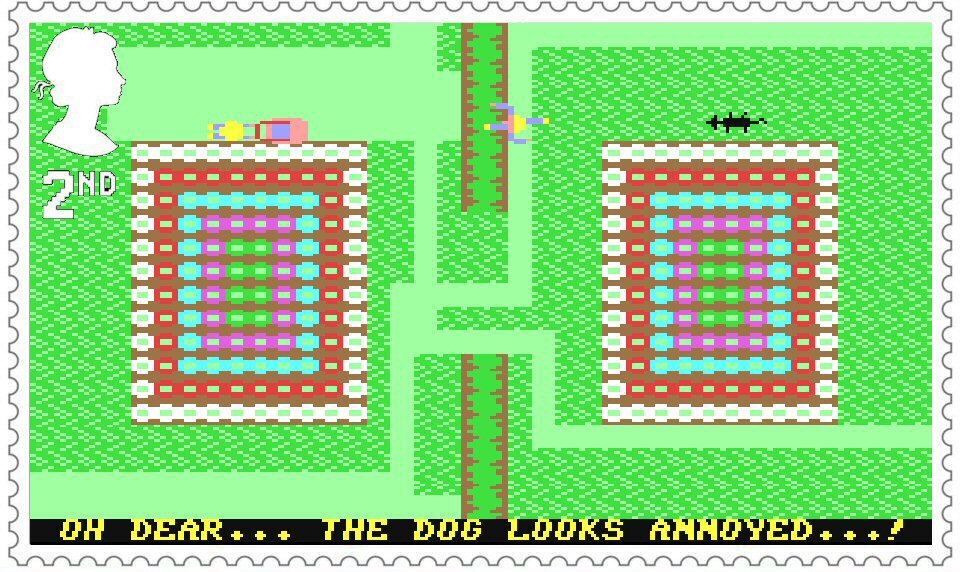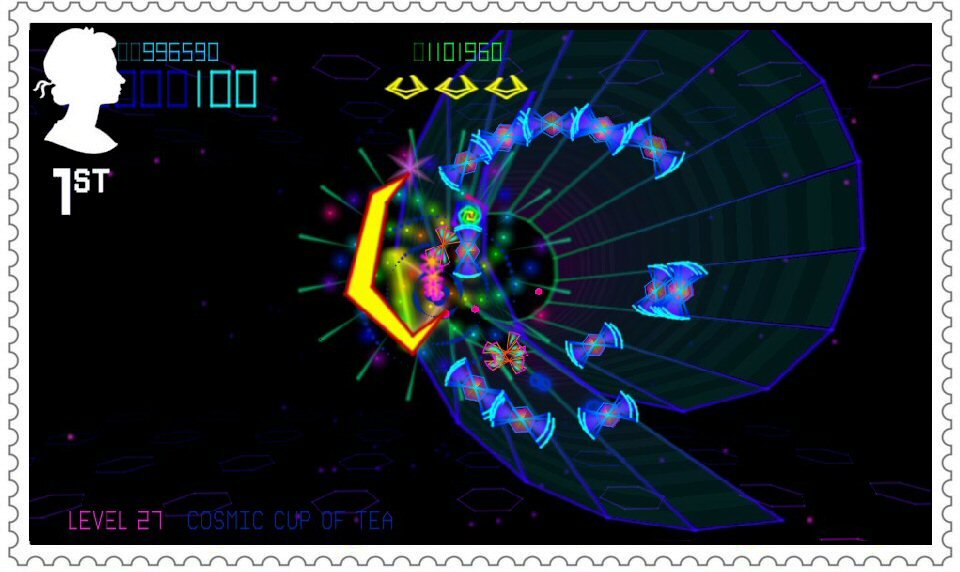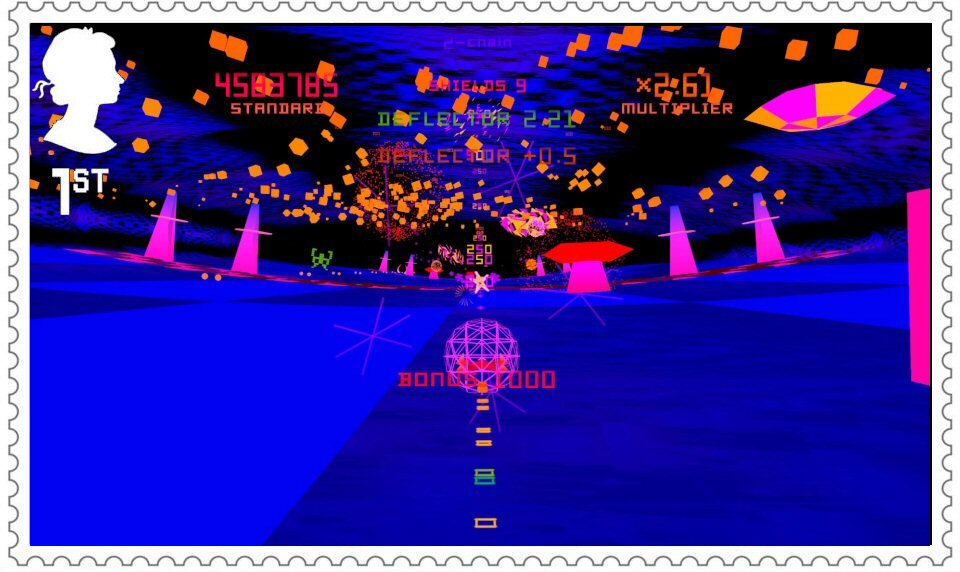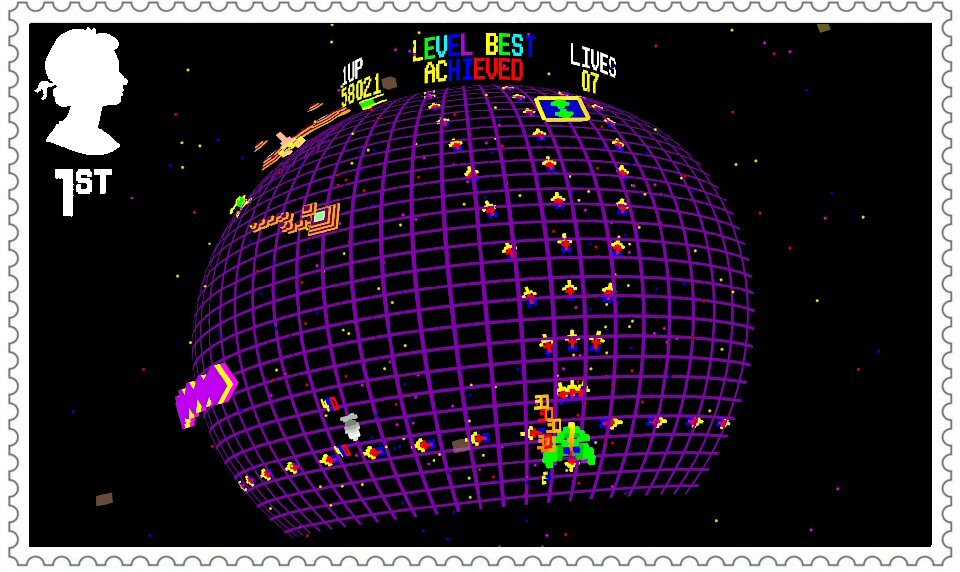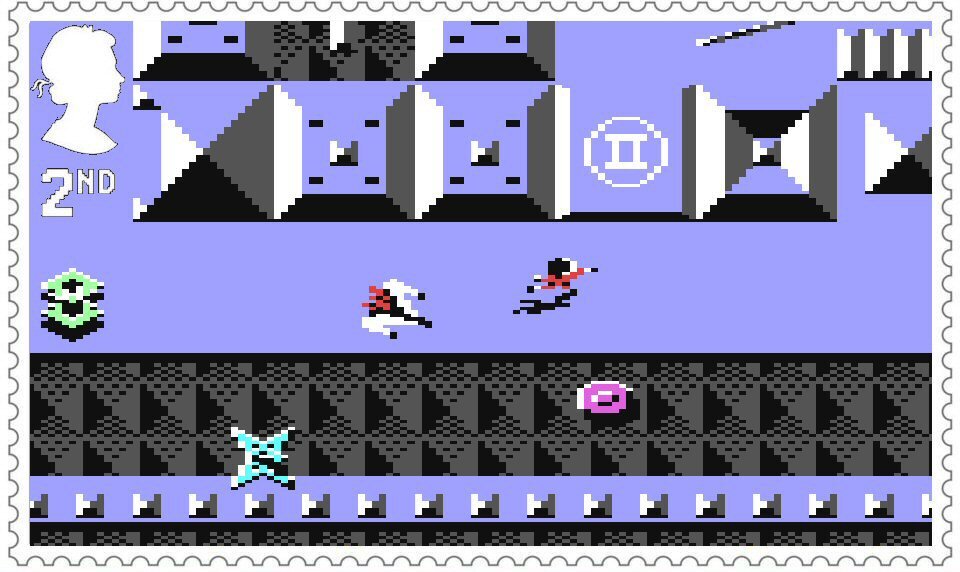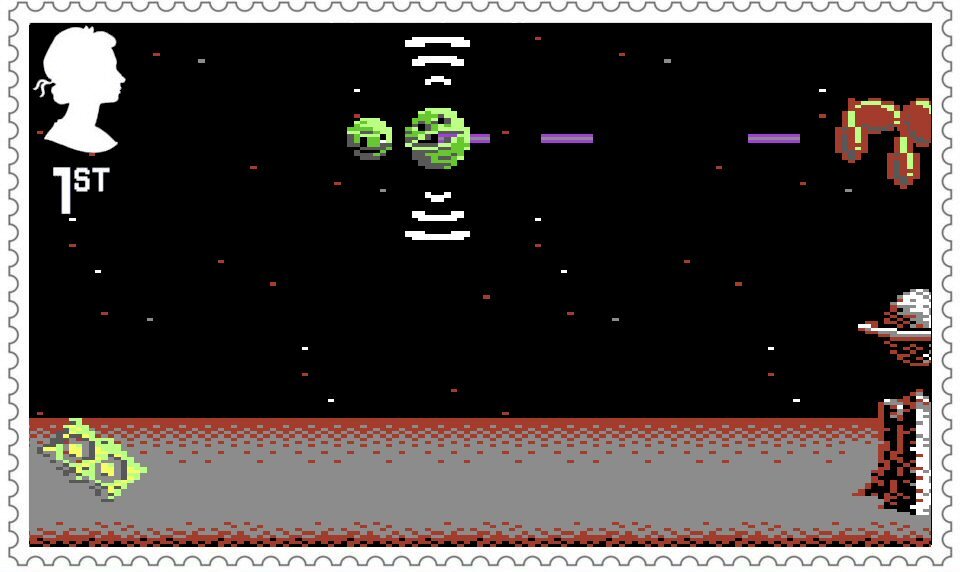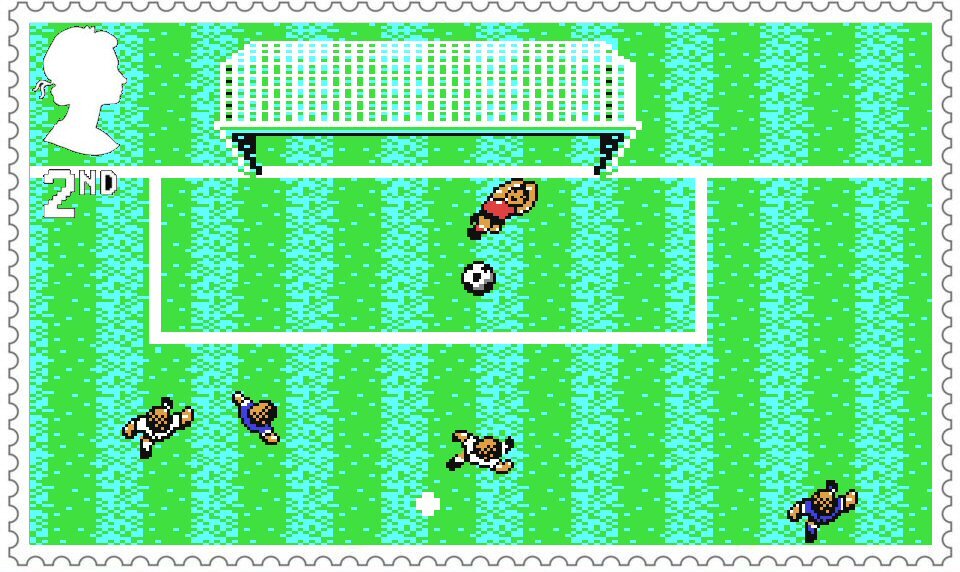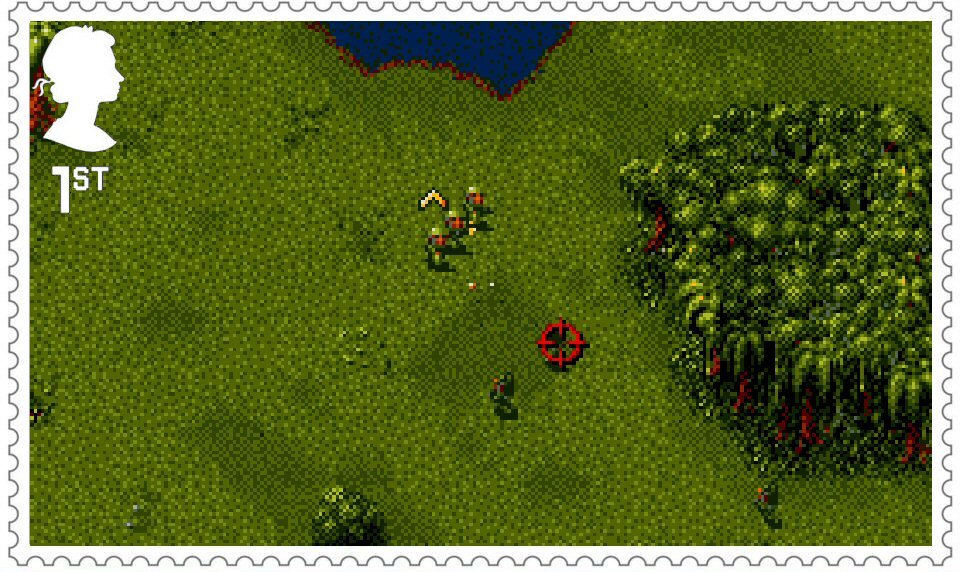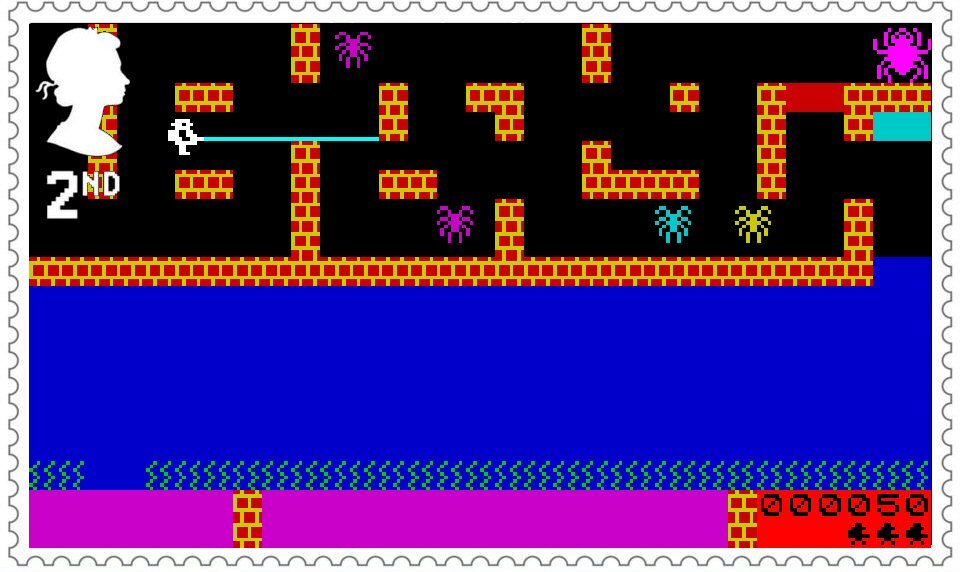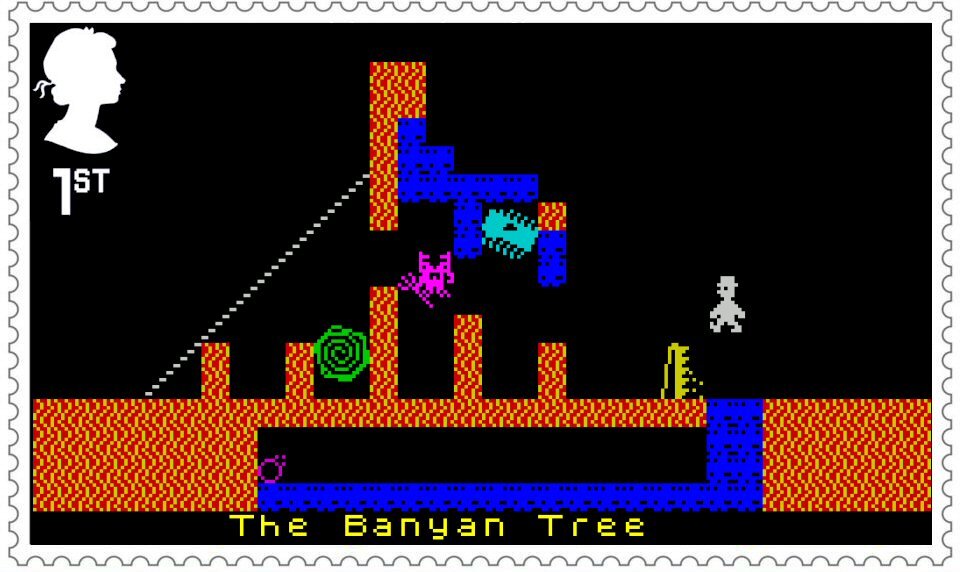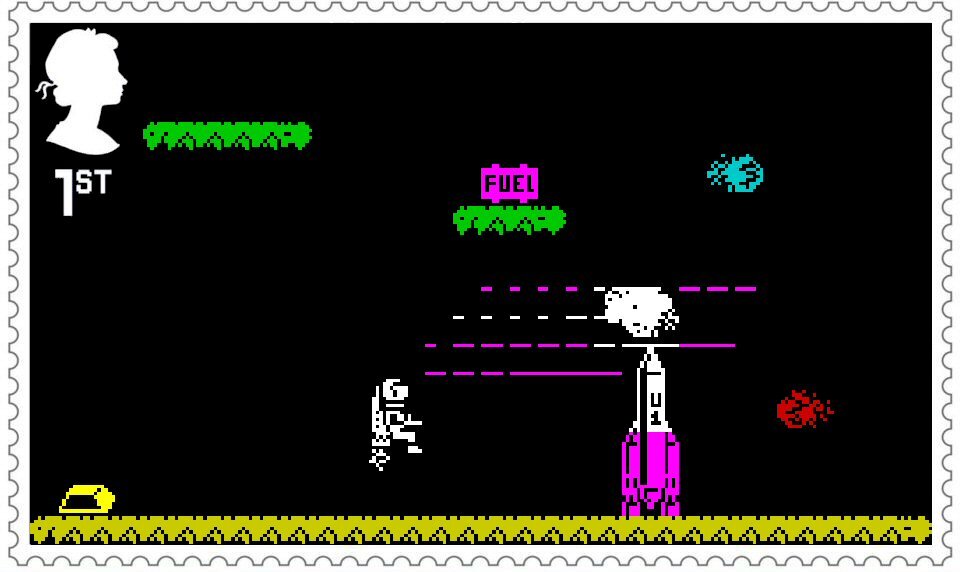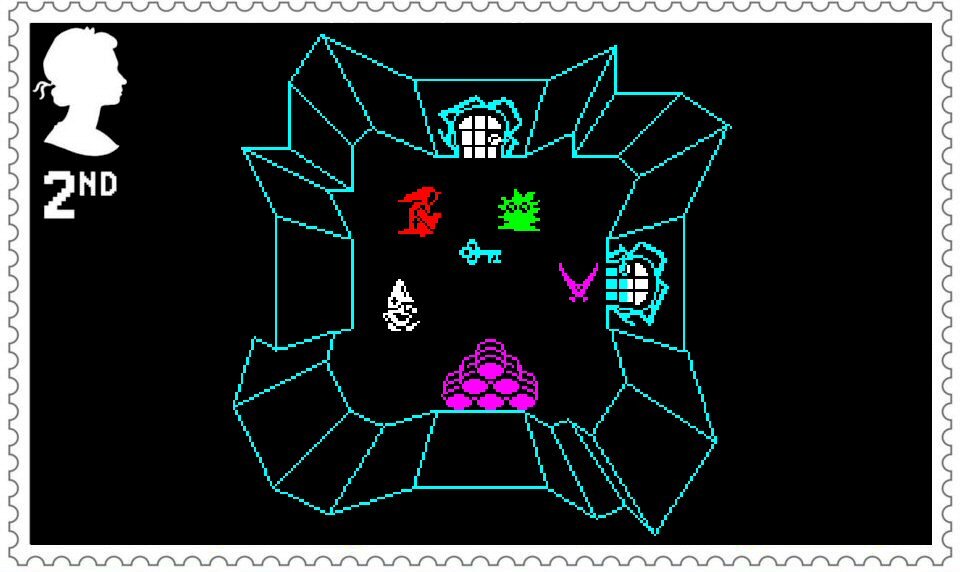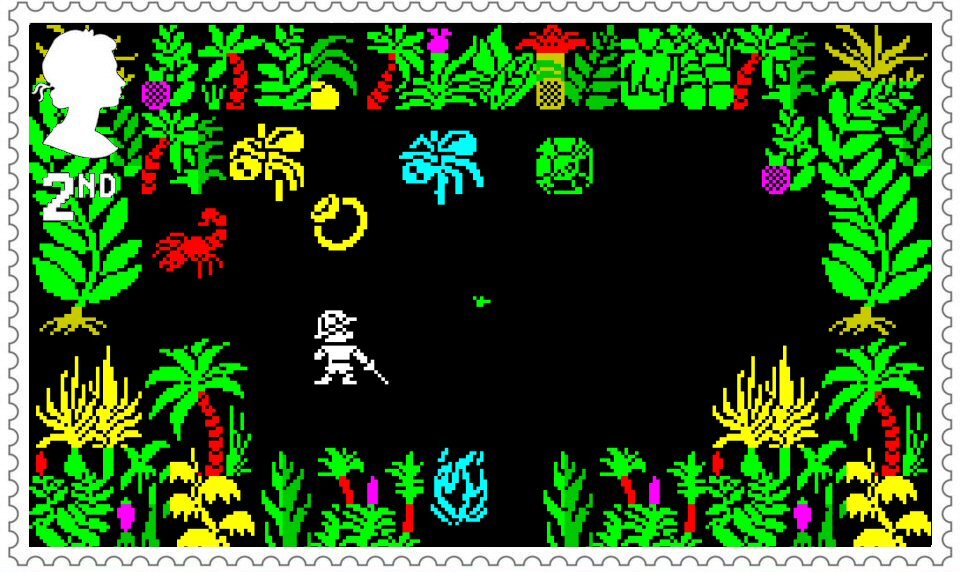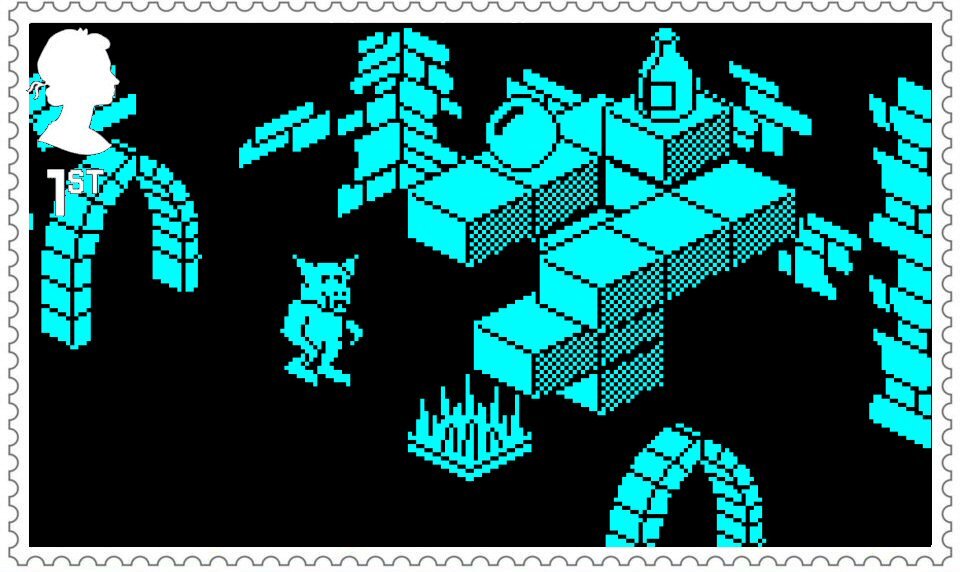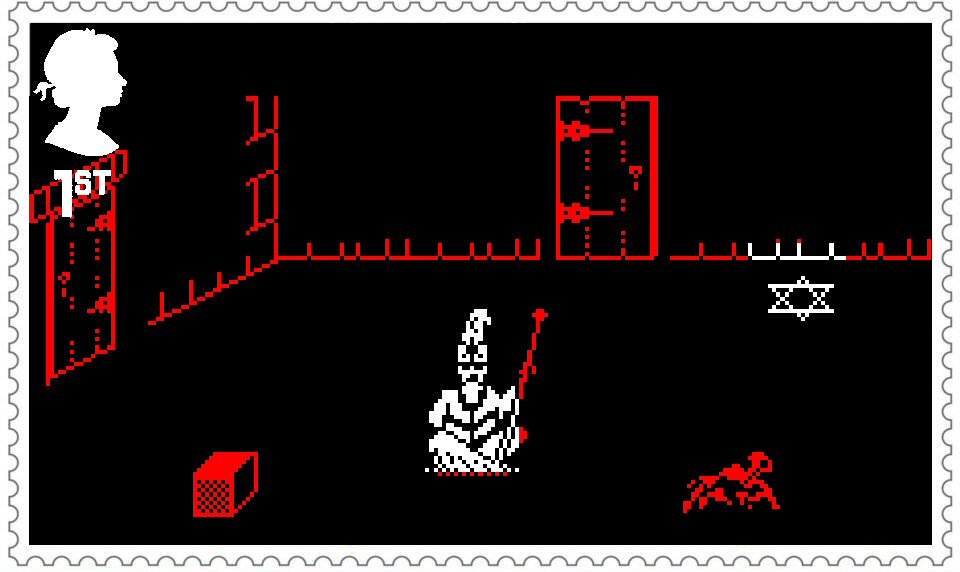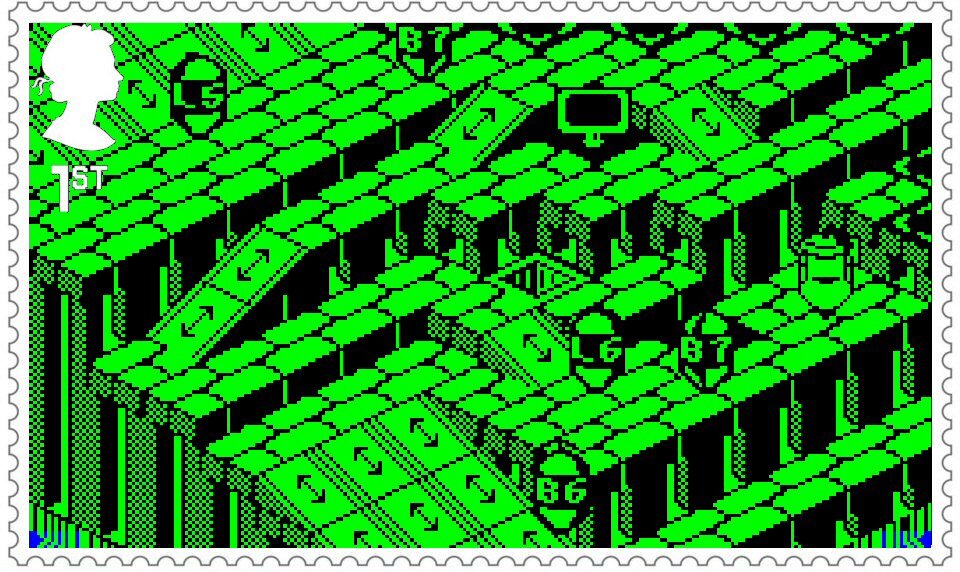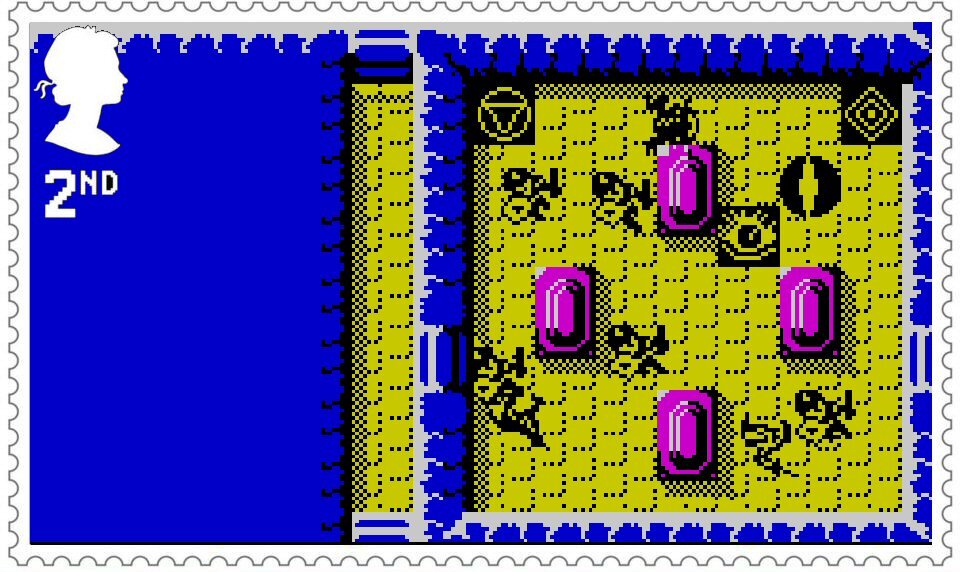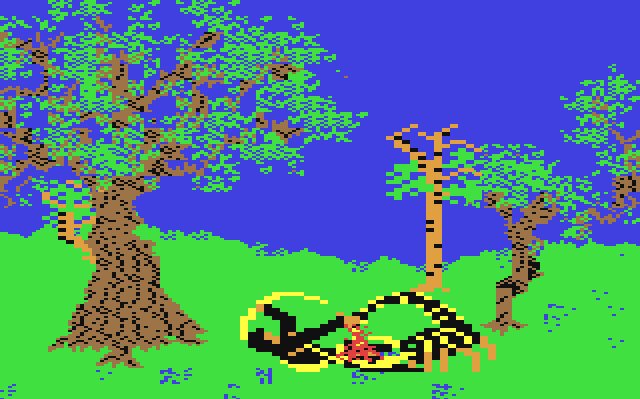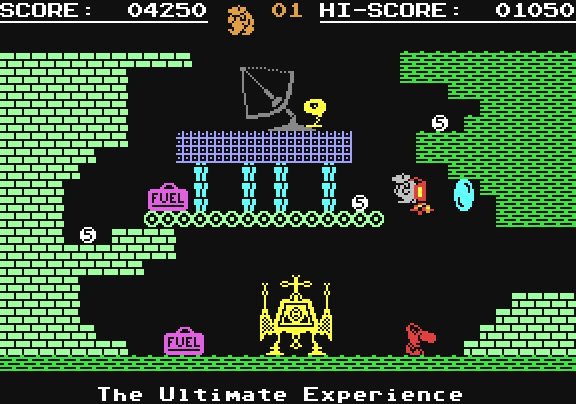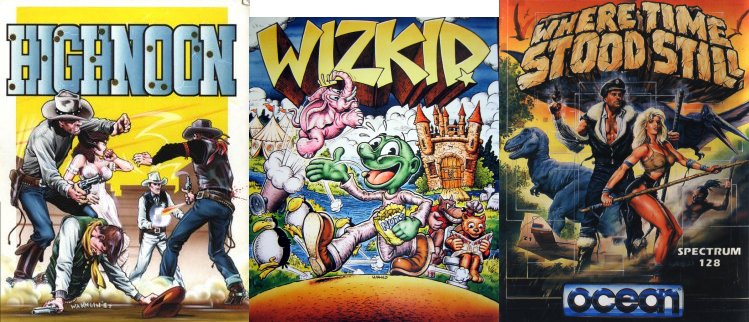If you have even the slightest interest in 80s and 90s computer games, then you can’t have failed to notice the Royal Mail’s video games stamps collection. Designed by the splendid people at Bitmap Books, they’re a wonderful tribute to some of the British computer and video games we loved the most. They’re lovely, and the selection of games is really good.
That said, with such a limited number of stamp designs available, and with the tricky licencing minefield to navigate, it was inevitable that not every great game or programmer could be covered. All across the internet, there were cries of “why wasn’t this game included?” or “why wasn’t that programmer featured?”. I don’t have that problem though, so I’ve used my limited skills to fill in some of the gaps with a kind of fantasy stamp collection. Only some though… it would take ages to make “stamps” for every game and programmer!
I’m not a designer or skilled with Photoshop, so bearing that in mind I humbly present an extended tribute to some of those legends and Gods who were not able to be covered. See how many you agree with…
The Braybrook Collection
Andrew Braybrook’s name is one of the first mentioned when you ask any Commodore 64 owners about their favourite games, so it’s fitting that he’s the first to be honoured with these stamps. It was with Gribbly’s Day Out (top left) that he really made his mark - a unique platform-cum-babysitting game with a feeling of flight and inertia unmatched by any 8-bit game. This was swiftly followed by his masterpiece, Paradroid (top right), which took the shoot ‘em up to new levels with its intelligent mix of strategy and blasting. It’s regarded by many as the best 8-bit game computer game ever, and even more highly than that by others. Following that was a tough ask, but Uridium (bottom left) stunned fans by providing the most arcade-like game yet seen on a home computer, with thrills to match. Andrew would eventually move up to Commodore’s 16-bit Amiga, creating one of the machine’s most lovable characters for the lovely platformer Fire & Ice - The Daring Adventures of Cool Coyote (bottom right). These are just four from Andrew’s catalogue full of quality, innovative games and represent the best of British software.
The Cecco Collection
Sinclair Spectrum owners will instantly recognise Raff Cecco’s signature style. His games featured large, colourful characters and backdrops, which can clearly be seen in this collection. They were also incredibly challenging - gamers who beat a Cecco game could rightly feel a smug sense of superiority. The earliest game represented here, Equinox (top left), gave the world a glimpse of what was to come with its combination of blasting and puzzling. It was followed by Exolon (top right), an epic and extremely addictive run-and-gun game. Cybernoid (bottom left) may be seen by many as Raff’s finest hour, although many a confident gamer found themselves chastened by its extreme difficulty. Stormlord (bottom right) deviated from Raff’s usual sci-fi fare, delving instead into mythology for a gentler kind of butt-kicking. These games are well deserving of a place in any stamp Cecco-llection.
The Crowther Collection
Few programmers were as prolific in their C64 output as Antony Crowther, which made choosing four games to be represented on stamps a particularly challenging task. It seemed only right that Blagger (top left) should be chosen, as it was the Commodore 64’s first real answer to the Spectrum’s Manic Miner (see The Smith Collection). Games don’t get more quintessentially English than Potty Pigeon (top right), where said bird defeats his enemies by using his, ummm, waste disposal system. Much more ambitious and polished was Trap (bottom left), an interesting shoot ‘em up even more notable for the superb hidden demo (seen in this stamp), which was produced in conjunction with his long-term musical collaborator Ben Daglish. Finally we have Bombuzal (bottom right), a clever and addictive puzzle game which featured input from many of the scene’s celebrities of the time. In truth, it would be easy for most people to swap out any of these games for any number of Tony’s other efforts, but these stamps do feel as though they represent the most iconic of his creations.
The Minter Collection
Of all those represented here, and with all due respect to the others, it’s probably Jeff Minter who deserves his stamp collection more than most. At the vanguard of British computer games programming in the earliest days of home computer gaming, he remains an important figure in that world today. He’s always had a vision and he embraces every generation of technology in his efforts to realise that vision. Jeff’s longevity has meant his collection is twice the size, in order to represent just a few of the eras in which he’s published games.
Although heavily inspired by the arcade games he loved, it was clear from the early release of Psychedelia (top left) that Jeff had more than just blasting in mind. An early version of the interactive lightsynths he would develop and refine over time, it was nonetheless a statement of intent right from the get-go. Another statement was made with Attack of the Mutant Camels (top right), which showed that if there was a way for hooved animals and computer games to be joined as one, Jeff would find a way to do it.
More unusual for Jeff came the game that could only have come from the mind of a British programmer - Hover Bovver (second row, left). Most of us could barely have imagined that much fun and amusement could come from a game about mowing the lawn, and yet here we are. A slew of Commodore 64 classics then followed before the inevitable move to 16 bits and the release of the shareware classic, Llamatron: 2112 (second row, right). Obviously a riff on Eugene Jarvis’ Robotron: 2084, it pushed all kinds of boundaries and proved that Jeff was going to be a force to be reckoned with for a long time to come.
After a number of dabblings with ill-fated systems, Jeff landed on the XBox 360 with the release of Space Giraffe (third row, left). The poorly-judged Official XBox Magazine’s 2 out of 10 rating is paid homage with this second class stamp, but Space Giraffe is a first class game to those who found The Zone with it.
Jeff is renowned for his love of Tempest and he’s programmed some excellent interpretations of it himself, but Sony’s exceptional handheld PS Vita received in TxK (third row, right) arguably the finest version of that game that Jeff has produced. With stunningly clean graphics that pop off the screen, an award-winning soundtrack and tightly-honed gameplay, the game and the machine are perfect for each other.
Moving bang up to date we see Polybius (bottom right), an incredible shooter inspired by the urban legend of the same name. Although it looks simple in screenshots, it’s a real thrill and possibly the best VR game you can play at the moment. Alongside that, and coming full circle, is Gridrunner (bottom right). An update of one of Jeff’s earliest games, it’s been ramped way, way up and given the VR treatment, and just shows what can be done with a game through the use of modern technology. It’s Jeff’s willingness to experiment with such technology, along with his knack of designing playable, user-friendly games that make his name legend, and he fully deserves to be celebrated in this collection.
The Sensible Collection
Sensible Software already have their own official stamp with Sensible Soccer, but that doesn’t mean their other games aren’t deserving of a collection. Their unique vision resulted in some of the best games of the era, and some of them can be seen here. Their arrival was announced in fine style with Parallax (top left), a sci-fi space shooter which came with an avant-garde Martin Galway title track and the trademark Sensible humour we’d go on to love so much. That was followed up with Wizball (top right), a game many consider to be the best 8-bit computer game of all time. It’s testament to its originality and perfect execution that it’s never been copied. Their love of football came to the fore with Microprose Soccer (bottom left), the forerunner to Sensible Soccer and the first home football game to really show that it was possible to produce a fast-paced footy game on the early machines. It wasn’t all silliness with Sensible though, and although their 16-bit classic Cannon Fodder (bottom right) retained the personality we’d come to expect, the game was surprisingly poignant and really did make you stop to think. Very Sensible indeed.
The Smith Collection
Matthew Smith may not have written many games, but there’s no denying that two of them are among the most important from our early gaming years. His first game may not be a household name but Styx (top left) proved to be an interesting starting point. It was with the release of Manic Miner (top right), though, that Smith went stratospheric. The surreal adventures of Miner Willy really struck a chord with gamers and left them wanting more. More was what they got with sequel Jet Set Willy (bottom row), which had the perfect combination of crazy scenario, wild and wacky enemies and obstacles and incredibly addictive platforming action. Although Matthew left the games industry after JSW, he left an indelible mark on peers and players alike.
The Stamper Collection
No stamp collection based on British computer gaming would be complete without a Stamper collection. The brothers formed legendary company Ultimate, and programmed and published some of the Spectrum’s most groundbreaking and legendary games. Their earliest releases were fun, but it was Jet Pac (top left) that really made everyone sit up and take notice. It brought fast arcade-style action into thousands of homes in a way we’d never really seen before. It wasn’t that long until Atic Atac (top right) arrived, combining shooting with the adventuring that would become the Ultimate trademark. Further enforcing this was Sabre Wulf (bottom left), which focused even more on adventuring and introduced Sabreman, a character who would be seen in numerous future Ultimate games. The most notable of those was Knight Lore (bottom right), which stunned the gaming world with its 3D “Filmation” graphics. Inspirational to countless others, Ultimate lives on today in Rare Ltd, and their games catalogue is huge, impressive and a real testament to the talent and vision of the Stampers.
The Turner Collection
No self-respecting gallery would be complete without a Turner, and we have four. Steve Turner was one of the Spectrum’s finest talents, releasing quality game after quality game. Even simple early efforts such as 3D Seiddab Attack (top left) had plenty to make them stand out, but as his programming skills grew, so did his ambition. The release of Avalon (top right) confirmed as much. Billed as an “Adventure Movie”, it really elevated the arcade adventure to another level and gave players something to really get their teeth into. Quazatron (bottom left) gave Spectrum gamers their own version of his friend Andrew Braybrook’s Paradroid, playing to the system’s strengths rather than attempting a straight conversion. Also in the vein of Paradroid was Ranarama, which tasked a poor sorcerer’s apprentice with defeating evil warlocks whilst finding the cure to change him back to a human from a frog! It was just one more example of the talent and imagination that British games programmers had in abundance.
That brings my stamp collection to an end, but only because I had to draw the line somewhere. There are countless other games and programmers I would have liked to feature, and maybe one day I’ll go back and cover them too. In the meantime, let me know what you think of this selection, and which classics you think should have been covered in your fantasy stamp collection. I’m sure there will be plenty of worthy suggestions!

